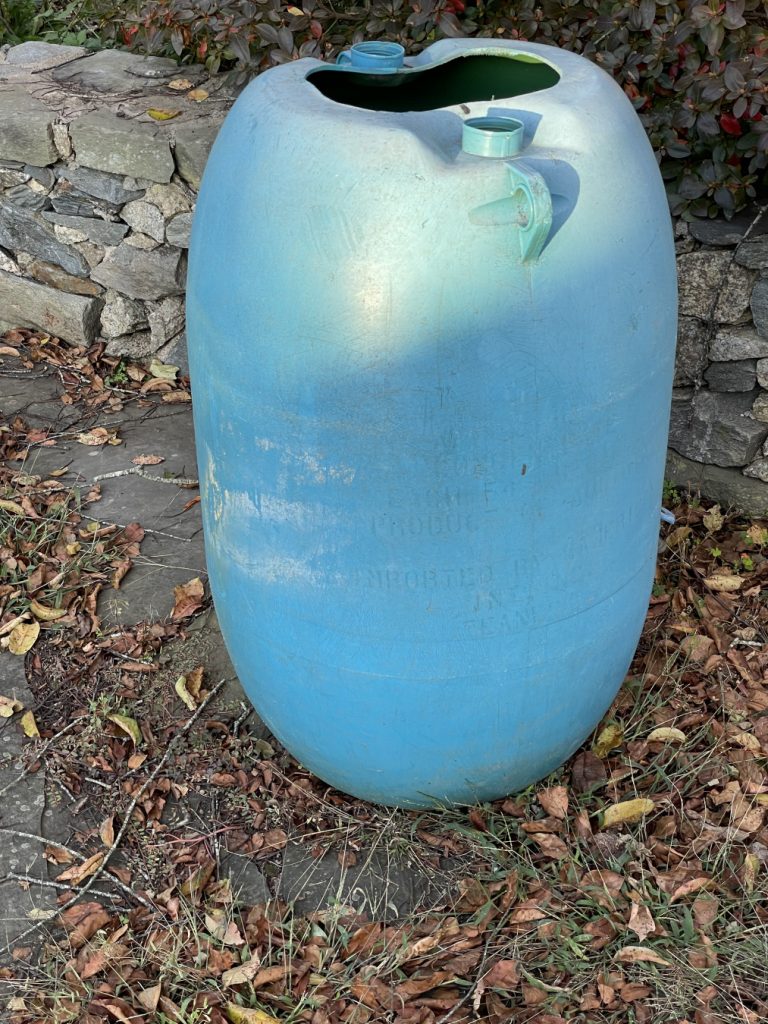
Living on an island near the coast is interesting in that thunderstorms often fall apart as they pass overhead. This often puts our area in a very dry situation, that, in summer can approach a drought. Being in drought conditions often causes a drop in the island’s only reservoir and the imposition of water restrictions. So how can a greenhouse owner or a gardener obtain enough water to keep their plants growing. I use several techniques to do this.
But before I collected rainwater, I carefully measured how much water I used each week. I found that watering every other day a 50-gallon pail lasted only about three days when watering around 200 plants. That meant collecting as much water as possible during thunderstorms and, at times, going out to the greenhouse during a rainy period to take water from the pail for the greenhouse plants. Fortunately, I have foul weather gear from my sailing days!
To collect the amount of water I need I captured runoff water by putting a plastic gutter along the entire length of both of my greenhouses and running the water into 50-gallon collectors attached to each gutter. In a severe storm the collector can fill in a few minutes.
But that is only a partial solution over two or three weeks of drought. When I take a shower in the morning the water has to come from the hot water tank in the basement. Every morning about half a gallon of water is wasted while waiting for the hot water to reach the showerhead. I keep a one-gallon watering can in the bathroom and collect this water. Getting hot water to the upstairs kitchen draws a similar amount of water. Every day this water is used to water a few plants.
When I make pasta for dinner the boiling water is allowed to cool and used for watering plants. This can often be one or two gallons of water. Any water used for cooking can be saved, cooled and used for watering plants in very dry conditions.
In the case of an extreme drought sometimes lasting three to six weeks, more extreme methods must be used to collect water for the plants. Putting the plug in the shower and using the water afterwards to water. This water might be soapy or might have a little salt in it from my swimming, so it is best used on non-food plants.

Yet another water saving technique is to apply a mulch to potted plants to help the plant retain moisture. In the case of flowers that cover the entire top of the pot, the soil will often stay moderately moist where it is shaded by flowers and leaves. But for small trees a layer of mulch will keep the plant moist for longer.
For orchids the best water saving technique is to immerse the pot in water for a few minutes to wet the orchid mix, then let the mix drain back into the watering pot. Use the same water for several orchids to save water. I often use this technique for other plants as well, but it usually leaves soil residue in the watering mix.










